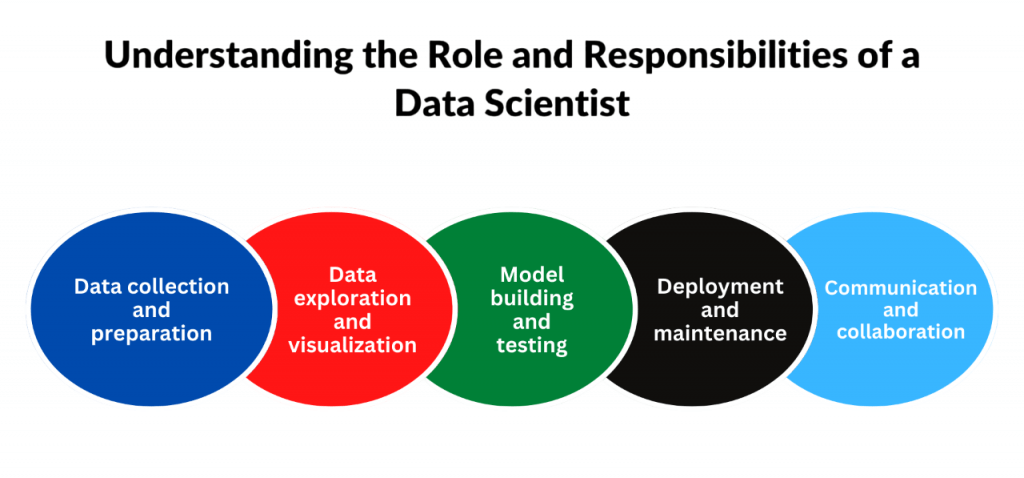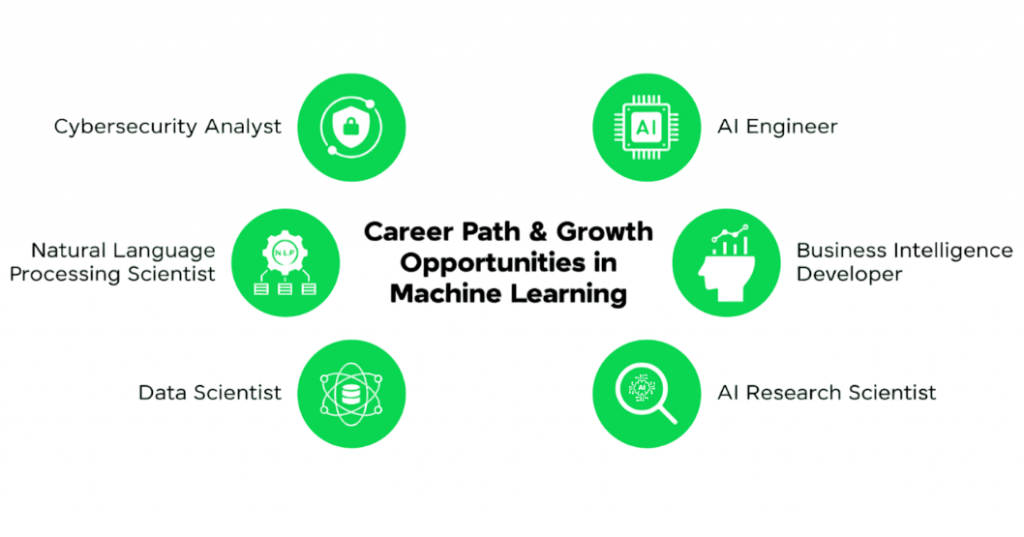
- Introduction ML Engineer vs Data Scientist
- Role Overview: ML Engineer vs Data Scientist
- Education and Background Requirements
- Tools and Technologies Used
- Day-to-Day Responsibilities
- Data Handling and Modeling
- Business Impact and Focus
- Work Environment and Team Collaboration
- Which Role Is Right for You?
- Conclusion
Introduction ML Engineer vs Data Scientist
As organizations increasingly leverage data to drive innovation and efficiency, roles like ML Engineer and Data Scientist have grown in demand. While these roles often intersect, they serve distinct purposes in the data-to-decision pipeline. A Data Scientist typically focuses on extracting insights from data, conducting analyses, building predictive models, and communicating findings. On the other hand, a Machine Learning Engineer is more involved in designing, building, and deploying machine learning models at scale. For foundational and advanced skills, explore Machine Learning Training. Understanding the ML Engineer vs Data Scientist differences , overlaps, and requirements of these roles is crucial for students, career switchers, and hiring managers alike.
Ready to Get Certified in Machine Learning? Explore the Program Now Machine Learning Online Training Offered By ACTE Right Now!
Role Overview: ML Engineer vs Data Scientist
In the fast-paced field of ML Engineer vs Data Scientist, two important roles stand out with unique but related responsibilities. Machine Learning Engineers create models that are ready for production. They design scalable ML pipelines, improve model performance, and handle key post-deployment tasks like versioning and monitoring. They work closely with data engineers and software developers to turn theoretical models into strong, functioning systems. To complement these engineering efforts with foundational modeling techniques, exploring Pattern Recognition and Machine Learning reveals how statistical, structural, and neural approaches are used to identify patterns enabling systems to classify data, extract features, and adapt intelligently across domains like healthcare, computer vision, and seismic analysis. On the other hand, Data Scientists make sense of complex datasets, carry out statistical analyses, and develop actionable insights using visualization techniques and hypothesis testing. While ML Engineers focus on implementation and scalability, Data Scientists concentrate on research, model validation, and translating technical findings into clear reports and dashboards for stakeholders. Even with their different approaches, ML Engineer vs Data Scientist roles are essential in making the most of data-driven technology.
Education and Background Requirements
ML Engineer
- Typically requires a Bachelor’s or Master’s in Computer Science, Software Engineering, or Machine Learning.
- Emphasis on algorithms, data structures, and distributed systems.
- Many ML Engineers come from a software engineering background and transition into ML by upskilling.
Data Scientist
- Often has a background in Mathematics, Statistics, Economics, or Data Science.
- A Master’s or Ph.D. is common, especially in research-heavy roles.
- Strong foundation in statistical methods, data exploration, and hypothesis testing.
While academic qualifications differ, practical experience and portfolios often carry more weight in hiring decisions. To complement hands-on expertise with scalable cloud-based solutions, exploring Overview of ML on AWS reveals how Amazon’s machine learning services empower developers to build predictive models, automate workflows, and deploy intelligent applications leveraging tools like S3, Redshift, and SageMaker to streamline the entire ML lifecycle across industries.
Tools and Technologies Used
Common Tools Shared:
- Python (pandas, numpy, scikit-learn)
- Jupyter Notebooks
- SQL
- Git
ML Engineer Toolset:
- TensorFlow, PyTorch (deep learning)
- Docker, Kubernetes (containerization)
- Airflow, Kubeflow, MLflow (ML pipelines)
- Apache Kafka, Spark Streaming (real-time data)
- CI/CD tools (Jenkins, GitLab CI)
- AWS/GCP/Azure (cloud infrastructure)
Data Scientist Toolset:
- R (statistical computing)
- Tableau, Power BI, matplotlib, seaborn (visualization)
- Excel (quick analysis)
- Hadoop/Spark (big data analytics)
- Experiment tracking (Weights & Biases, Neptune.ai)
The ML Engineer’s stack skews toward engineering, while the Data Scientist uses tools for exploratory and statistical tasks.
To Explore Machine Learning in Depth, Check Out Our Comprehensive Machine Learning Online Training To Gain Insights From Our Experts!
Day-to-Day Responsibilities
As a Machine Learning Engineer, I design and implement scalable ML systems. I focus on writing clean, production-ready code and building reliable pipelines for model training and serving. I closely monitor model performance and manage the entire model lifecycle. I also work closely with data engineers to ensure smooth integration of data pipelines. To complement these engineering practices with framework-level clarity, exploring Keras vs TensorFlow reveals how Keras simplifies model development with a high-level API, while TensorFlow offers both low-level control and scalable deployment options helping ML engineers choose the right tool based on dataset size, debugging needs, and performance requirements.

In my role as a Data Scientist, I gather and clean data thoroughly. I perform exploratory data analysis and run statistical models and A/B tests. I turn complex analytical findings into clear insights using dashboards, reports, and presentations. This work ultimately helps business teams make data-driven decisions. While both roles involve coding and data analysis, the key difference is in our goals: I create operational machine learning systems, while I develop strategic business intelligence.
Data Handling and Modeling
In the fast-changing field of data science and machine learning, Data Scientists and ML Engineers play key roles in how organizations use data insights. Data Scientists pull historical insights from descriptive and inferential statistics. They also build predictive models, like customer churn analysis, which offer important business information. On the other hand, ML Engineers elevate these models by managing live and streaming data. For foundational and advanced skills, explore Machine Learning Training. They focus on automation, scalability, and accuracy that is ready for production. While Data Scientists may keep models in notebooks, ML Engineers work hard to optimize, version, and deploy these models in real-world settings. They implement advanced fraud detection systems in banking transaction pipelines. This teamwork allows organizations to turn raw data into useful intelligence, helping them make better decisions and improve efficiency.
Looking to Master Machine Learning? Discover the Machine Learning Expert Masters Program Training Course Available at ACTE Now!
Business Impact and Focus
Data Scientist
- Often works closer to business units like marketing, finance, or HR.
- Translates data into actionable insights for strategic decisions.
- Delivers analyses and visualizations that inform campaigns, pricing, user behavior, etc.
ML Engineer
- More aligned with engineering and product teams.
- Drives impact by integrating intelligent models into applications and systems.
- Success is measured by model performance, uptime, and latency.
In essence, Data Scientists influence decisions, while ML Engineers power systems.
The ML Engineer’s environment is more technical, while the Data Scientist’s is more strategic.

Career Path
- Junior Data Scientist → Senior Data Scientist → Lead Data Scientist → Chief Data Officer
- Junior ML Engineer → ML Engineer → Senior ML Engineer → ML Architect → Head of AI/ML
- Collaborates with: software engineers, DevOps, data engineers.
- Often embedded in product teams.
- Works on building and deploying systems used by customers or other software.
- Collaborates with: analysts, business leaders, product managers.
- Often part of BI, analytics, or strategy teams.
- Work output may include dashboards, business reports, or executive presentations.
- You enjoy coding and system design.
- You want to deploy models that power real-time apps.
- You’re interested in DevOps, cloud, and software architecture.
- You prefer a technical engineering career path.
- You enjoy exploring data and deriving insights.
- You’re fascinated by statistics, storytelling, and business impact.
- You want to guide strategic decisions through analysis.
- You prefer a role that blends math, communication, and logic.
Data Scientist:
ML Engineer:
Additionally, both roles can transition into product management, AI research, or entrepreneurship in AI-based startups.
Work Environment and Team Collaboration
ML Engineer’s Work Environment
Data Scientist’s Work Environment
The ML Engineer’s environment is more technical, while the Data Scientist’s is more strategic. To complement this distinction with career-level insights, exploring Machine Learning Engineer Salary reveals how technical expertise in frameworks like TensorFlow, PyTorch, and containerized deployment can lead to compensation ranging from ₹7.5 to ₹8 lakh annually in India, with global averages exceeding $120K highlighting the value of hands-on engineering skills in today’s data-driven economy.
Preparing for Machine Learning Job Interviews? Have a Look at Our Blog on Machine Learning Interview Questions and Answers To Ace Your Interview!
Which Role Is Right for You?
Choose ML Engineering if:
Choose Data Science if:
Both roles are rewarding but differ in orientation: one is engineering-driven, the other insight-driven. To complement these career paths with practical development resources, exploring Machine Learning Tools reveals top frameworks like TensorFlow, Accord.NET, and Apache Mahout each offering specialized capabilities for building, training, and deploying intelligent models across domains such as recommendation systems, fraud detection, and natural language processing.
Conclusion
In the fast-changing world of data-driven technologies, Machine Learning Engineers and Data Scientists play important but different roles that contribute to the success of organizations today. ML Engineer vs Data Scientist professionals are vital in the data ecosystem, but they have different career paths and unique skills. Machine Learning Engineers focus on deploying, scaling, and improving system performance. They use tools like TensorFlow, Docker, and cloud platforms, often coming from backgrounds in Computer Science or Engineering. Their main goal is to create live, production-ready machine learning systems using strong coding and design skills. On the other hand, Data Scientists analyze data to gain insights and improve business intelligence. They work with Python, R, SQL, and visualization tools, usually having academic training in statistics, economics, or mathematics. For foundational and advanced skills, explore Machine Learning Training. Their efforts lead to reports, dashboards, and predictive models that influence important business decisions. For those considering these careers, the choice between them depends on personal interests: whether they prefer system design and technical work or trend analysis and strategic planning. Both paths offer great opportunities in a data-driven world, allowing talented individuals to make meaningful changes in technology and business.



